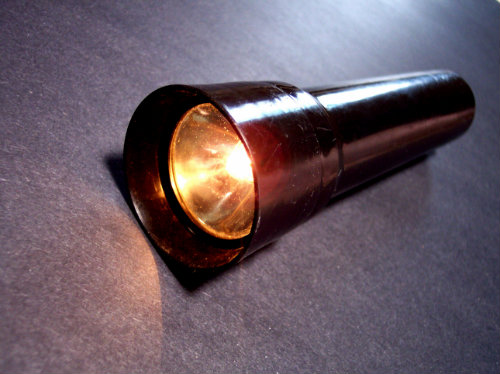
How to Make a Vehicle Emergency Kit
No one expects their vehicle to breakdown, but a range of problems could happen at any time. From a dead battery to a tire failure, we want you to prepare for the worst. Here are some suggestions for items that you could carry in your vehicle.
Something to keep you healthy
In case your car is miles away from any restaurant or town, you’ll want to have a stash of food and water to make sure that you can replenish your body’s energy. Remember that you will want to have food that can last for a long time and won’t be spoiled from cold or hot temperatures. Still, to be safe you will want to replace the food at least a few times during the year. Here are some possible food items that you could keep in your car:
- Cereal
- High energy food bars
- Nuts
- Peanut butter
- Whole-wheat crackers

Something to let you see
Something to keep you warm
Without your vehicle’s heater working, it would be a good idea to have some type of warmth. Keep some wool blankets handy to protect yourself from feeling cold. Wool is an incredibly durable fiber that can keep you warm even when it is wet, as it can soak up to 30% of its own weight in moisture. There are emergency blankets and bags that you can purchase as well that are easily fold-able. Also, you should have several pairs of gloves and winter hats in your vehicle to protect your hands and head and whoever else may be in your vehicle. In addition, having a poncho can be nice to keep you dry if its raining and you need to go outside.
Jumper cables
Every driver should have jumper cables to prevent being stuck because of a dead battery. However, using a jumper cable can be very dangerous if they aren’t used correctly. Read
- Have two cars parked close (but not touching) and facing one another.
- With both cars’ engines turned off, open their front hoods and locate the cars’ batteries, which typically looks like a large black box with two posts and two cables.
- Clamp the red cable (positive cable) to the dead vehicle’s positive battery post. Positive posts may be identified with a “+” symbol on them, and is usually larger than the negative post. With the opposite side of the red cable, clamp it to the booster vehicle’s positive battery post. Make sure that the clamps are tight and aren’t touching anything else.
- Clamp the black cable (negative cable) to the booster vehicle’s (NOT the dead vehicle first) negative battery post. Then, clamp the opposite side of the black cable to a heavy metal bracket or part of the engine that isn’t touching the battery or any moving parts on the dead vehicle.
- Start the booster vehicle’s engine and let it sit for a few minutes. Then, start the dead vehicle’scar and let it sit for a few minutes.
- Remove the black cable from the dead vehicle’s engine first, and then remove the black cable from the booster vehicle. Next, remove the red cable from the booster vehicle, and then remove the red cable from the dead vehicle.

First-aid kit
When help is miles away, having tools to tend to injuries can be a life saver. Choose a kit that will allow you to treat different problems, such as cuts or burns. Be sure to include AT LEAST the following items in your first-aid kit:
- Alcohol wipes
- Bandages
- Emergency whistle
- Gauze pads
- Hand sanitizer
- Pain relievers
Depending on your situation, you may need other items in your vehicle. It’s probably a good idea to keep tools such as a tire gauge, wrenches, portable radio, and spare fuses. A shovel can be handy to have if you get stuck in a hole or need to dig yourself out of a ditch.
Having all of these items should get you started on creating a vehicle emergency kit. You could also consider getting mechanical breakdown coverage. If you would like to learn more, give CCIS a call at 800-807-6871.
Categories: Blog
